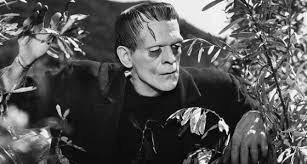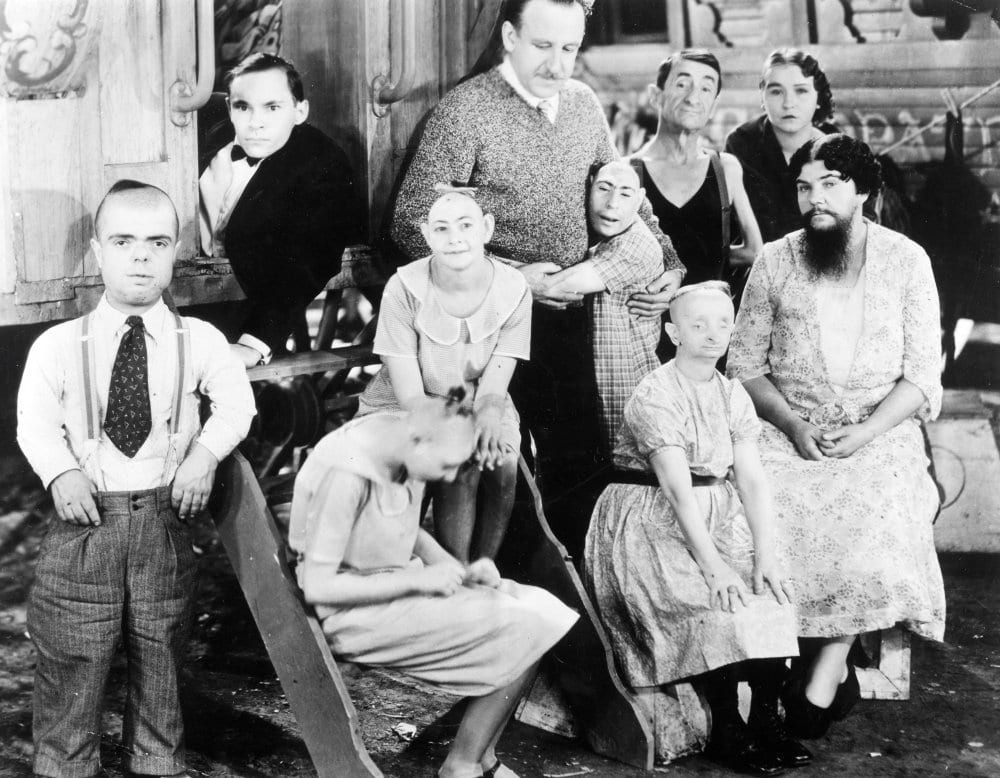By the 1930s horror had hit its stride; the genre had become a commodity. Cheap and easy to make, the films attracted well-known actors and returns were high. There was also a healthy appetite from the audience; horror films became a staple for many studios, something they could rely on to make a bit of money quickly. In this article, we will explore horror in the 1930s.

For the next two decades Universal did a good job of dominating this genre; with a back catalog of fan favorites it’s hard to single out the most influential to the genre as a whole. There is a rich and diverse collection of films, but it is only right to start with the granddaddy of them all….Frankenstein.
Directed by James Whale, 1931’s Frankenstein is still to this day considered one of the all-time classics. It is a beautifully told story of a brilliant scientist bringing to life a creature made up of human parts. This is a horror film with heart and soul and is also remarkable for being a horror film with something to say. The monster is raging, confused and ultimately scared; the audience is compelled to watch this misplaced non-human entity find his way in a world that is not ready or willing to accept him. Why not? This unnatural being is unknown and something to be feared. This has been a recurring theme in many like-minded films over the years—the fear of the unknown.
That’s not to say Frankenstein’s monster should not be feared. He is a savage, murderous beast after all. but Whale manages to imbue the monster with a heart beating or not. Frankenstein set the bar high and arguably it was only Whale who was going to match it with further “monster” movies—in a decade that served him and a receptive audience well.
Whilst the Thirties was littered with classic monster movies, it was also a period of daring ingenuity and some truly disturbing stories. Todd Browning masterfully tells the story of a group of circus workers revolting against a co-performer who is trying to marry into wealth in the never bettered Freaks. This 1932 voyage into a macabre and murky world only served to satisfy the thirst for dark tales; again, tapping into the fear of the unknown, Browning only cast actors with physical disabilities to form the circus crew. You have to remember this was a far more innocent age long before the advent of social media and even Television was in its infancy. The general public would have only live entertainment to draw any experience from such as circuses; heir fears would have been very real at the time.

Freaks is not outwardly scary to the modern viewer; in fact, most films from this period would not be viewed as scary now but there is an underlying feeling of dread and uncertainty which makes for an uncomfortable watch. The initial backlash to the film is understandable—again testing the fears of the unknown. Putting that aside, the film is sensitively made within the confines of the story it tells.
The early thirties was not one to rest on its laurels either with a constant flow of horror films to fill any desire the audience may have. 1932’s White Zombie is considered to be the first zombie film paving the way for a glut of undead films to follow in later years. Also to follow was The Island of Lost Souls and another Boris Karloff starrer, The Mummy.
Like Lon Chaney, Karloff was fast becoming a horror icon—taking on some of the most famous roles such as Frankenstein’s Monster and The Mummy. However, one of his craziest and outrightly scary roles was to come in The Old Dark House—no makeup was needed!
Thundering rain and howling wind scupper a couple and their friend’s journey, so much so they need to find shelter to avoid landslides. The house they pull up to is foreboding to say the least and the welcome is at best frosty as this house holds a dark secret; this is Whale in his element enjoying outlandish characters and throwing all sorts of horror tropes at the audience. It’s a thrill ride full or intrigue and is a very different horror film to many that preceded it and subsequently followed.
The Old Dark House, 1932, is macabre, dark, and psychological horror; it does well to hide its monster and the build-up of dread is evident throughout the film. When Boris Karloff crashes onto screen it is a violent, ferocious turn very different to the restrained minimalist Frankenstein’s monster.

Thirties horror takes a very clear step away from the typical twisted love story that we saw in the twenties. There are no love lost villains or stalking menaces; here they are outright monsters and often do not have emotional ties to the ones they hurt. The romantic element takes a back seat. The horror is more intense as the motivation has changed and in some cases is a direct look at very real social fears of the time. In fact, the recurring theme in a lot of these films was the downfall of an intelligent man—often a scientist—meddling with things of an unnatural nature. By the thirties, the war had become a distant memory; America and Europe were generally conflict-free. These films were tapping into fears that the audience didn’t know they had; it is easier to scare someone with something they have not seen or experienced before. As the years pass, war will again become a way of life and what scares people will again change. For now though, the thirties roll on with more influential horror films.
By now, James Whale was a household name. His films were not only making money but were genuinely brilliant and groundbreaking—none more so than The Invisible Man in 1933. Utilizing special effects not seen before to make a man disappear, this is a film about one man’s descent into insanity.
This time drawing from a science fiction novel written by H G Wells, The Invisible Man is a masterclass of a science project gone wrong. Claude Rains is Dr. Jack Griffin—a brilliant scientist who creates a formula to make himself invisible. Unfortunately, the formula has a side effect, insanity. Rains is superb in this role which is even more impressive given that you never see him in it! The humanity he gives this character is often heartbreaking and with fits of violence throughout the film always has you on edge. Action packed and impressively violent for the time The Invisible Man deserves its place as a pioneer in special effects and horror history and is an oft-overlooked classic.
With the decade now well underway, horror was having a huge surge. It was starting to transcend other genres such as science fiction and although not considered horror in the truest form King Kong deserves recognition for some of its iconography. Skull Island is suitably unforgiving and grimy and the tribes’ people living there are violent and animalistic; kong himself is unrelenting and ferocious in battle and there is no shortage of action. The first half of the film is very much steeped in what was fast becoming typical horror lore and it gives the film a menacing undercurrent.
Franchises started to become popular especially within Universal’s catalog. Characters would also make regular appearances. Dracula featured in multiple films throughout the thirties and beyond. However, one sequel stands head and shoulders above the pack. The Bride of Frankenstein in 1935 took a new twist on the original story and injected an emotional punch that was unexpected and genius. It seems almost indulgent to continue with another one of Whale’s films but this just goes to show his importance and influence over this much-loved genre.
The Bride of Frankenstein is a rare beast in that it is a sequel considered to surpass the original; that is, of course, subjective and open to further debate but in terms of the horror genre it further imbues a story with heart and emotion whilst cranking up the fear. This time Dr. Frankenstein is coerced into creating life once again whilst this original monster continues his rampage. Through misunderstanding more than malice the monster provides the horror but again Whale continues his undercurrent of social misunderstanding.
The later years in this golden decade of horror continued to bring out some classic tales. Others worth of note are; The Cat and The Canary, The Black Book and The Phantom.
It wasn’t until the forties when Horror films started to become populist events and dare I say it..…fun. Much-loved characters from the horror world continue well into the forties and beyond cementing the craze for franchises and sequels, none of which would’ve been possible without what was accomplished by horror in the 1930s.


